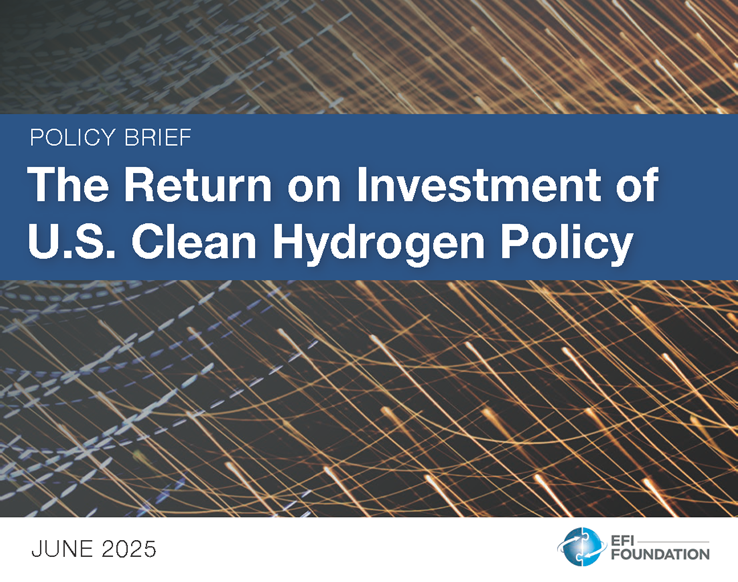The Return on Investment of U.S. Clean Hydrogen Policy (June 2025) quantifies the economic return of U.S. clean hydrogen hubs (H2Hubs) and policy incentives by comparing low-carbon hydrogen program costs with their potential economic benefits.
In 2021, Congress passed the Bipartisan Infrastructure Law (BIL), providing $8 billion in funding for new energy infrastructure nationwide. States, local governments, and the private sector have strongly supported H2 Hubs, with at least 469 companies committing up to $50 billion for hub projects. As momentum for clean energy investment continued, Congress passed the Inflation Reduction Act (IRA) in 2022, creating an incentive for producing low-carbon hydrogen projects. These policies have supported plans for more than 200 low-carbon hydrogen projects across 35 states, with roughly 130 of the projects announced since the IRA was passed.
Based on S&P Global’s analysis, the EFI Foundation estimates that every $1 in incentives going to H2Hubs projects using 45V tax credits will generate $7 in gross domestic product (GDP) in the next four years, while also supporting an annual average of 22,000 jobs (direct, indirect, and induced).
For every direct job supported in an H2Hub state, three will be supported in an emerging supply chain spanning H2Hub and non-hub states. When considering all ecosystem investments and subsidies, from 2026 to 2029, the return on investment (ROI) on the H2Hub program is more than 10:1 (i.e., $10 in GDP is created from every $1 invested in the incentives).

